<--- Back to Details
| First Page | Document Content | |
|---|---|---|
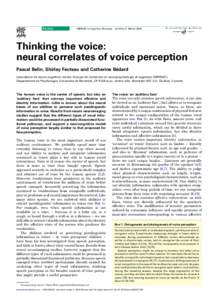 Date: 2015-06-14 08:40:45Neuroscience Nervous system Brain Cerebrum Cognition Audiology Superior temporal sulcus Face perception Auditory cortex Superior temporal gyrus Speech perception Phonagnosia |
Add to Reading List |
 | Review TRENDS in Cognitive Sciences Vol.8 No.3 March 2004DocID: 1qWes - View Document |
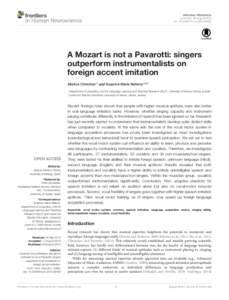 | A Mozart is not a Pavarotti: singers outperform instrumentalists on foreign accent imitationDocID: 1qfBk - View Document |
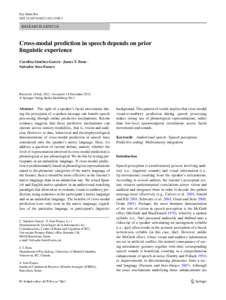 | Exp Brain Res DOIs00221Research Article Cross-modal prediction in speech depends on priorDocID: 1oPND - View Document |
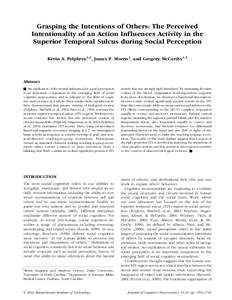 | Grasping the Intentions of Others: The Perceived Intentionality of an Action Inf luences Activity in the Superior Temporal Sulcus during Social Perception Kevin A. Pelphrey1,2, James P. Morris1, and Gregory McCarthy1,3DocID: 1lUE2 - View Document |
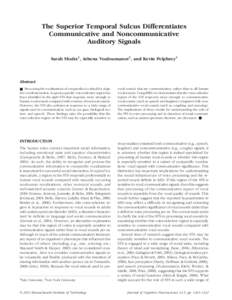 | The Superior Temporal Sulcus Differentiates Communicative and Noncommunicative Auditory Signals Sarah Shultz1, Athena Vouloumanos2, and Kevin Pelphrey1 AbstractDocID: 1f2ER - View Document |
 Review TRENDS in Cognitive Sciences Vol.8 No.3 March 2004
Review TRENDS in Cognitive Sciences Vol.8 No.3 March 2004